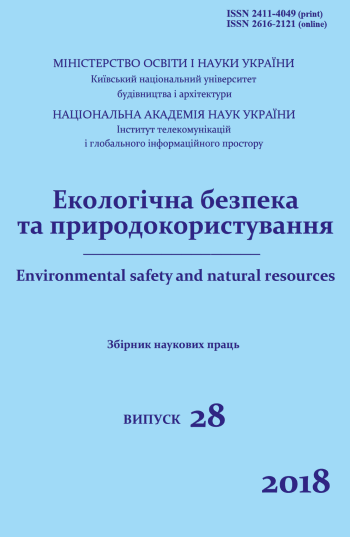The role of establishments of nature protected fund in ecological-educational and recreational-touristic aspects of sustainable development of Zakarpattia region
DOI:
https://doi.org/10.32347/2411-4049.2018.4.39-47Keywords:
environmental education for sustainable development, Nature Protected Fund, biosphere reserve, tourist and recreational potentialAbstract
The best practices of Ukrainian Nature Protected Fund establishments (on the example of the Carpathian Biosphere Reserve) were studied in terms of ecological-educational and recreational-touristic activity development basing on sustainable development aspects. Here provided analysis of the reserve’s visiting dynamics and the possibility of cooperation between the objects of Nature Protected Fund and higher education establishments. The positive influence of protected areas on practical training of future bachelors of specialty 101 "Ecology" was demonstrated.References
Verkhovna Rada of Ukraine. (2003, May 22). Framework Convention on the Protection and Sustainable Development of the Carpathians. Retrieved from zakon.rada.gov.ua/go/998_164 (in Ukrainian).
Hanewinkel, M., Cullmann, D. A., Schelhaas, M-J., Nabuurs, G., & Zimmermann, N. E. (2013). Climate change may cause severe loss in the economic value of European forest land. Nature Climate Change, 3, 203-207 (in English).
Gamor, F. D. (2018). Dejaki istorychni aspekty stvorennja ta rozvytku Karpats'kogo biosfernogo zapovidnyka. In Mizhn. Nauk.-prakt. Konf. z nagody 50-richchja organizacii' Karpats'kogo biosfernogo zapovidnyka "Problemy zberezhennja girs'kyh ekosystem ta stalogo vykorystannja biologichnyh resursiv Karpat" (pp. 107-118). Ivano-Frankivs'k: NAIR (in Ukrainian).
Rybak, M. P. (2018). Karpats'kyj biosfernyj rezervat – rushijna syla regional'nogo rozvytku girs'kyh terytorij. In Mizhn. Nauk.-prakt. Konf. z nagody 50-richchja organizacii' Karpats'kogo biosfernogo zapovidnyka "Problemy zberezhennja girs'kyh ekosystem ta stalogo vykorystannja biologichnyh resursiv Karpat" (pp. 327-377). Ivano-Frankivs'k: NAIR (in Ukrainian).
Godovanec', B. J., Dovganych, Ja. O., & Ljashenko, Je. K. (2018). Riznomanittja tvarynnogo svitu Karpats'kogo biosfernogo zapovidnyka. In Mizhn. Nauk.-prakt. Konf. z nagody 50-richchja organizacii' Karpats'kogo biosfernogo zapovidnyka "Problemy zberezhennja girs'kyh ekosystem ta stalogo vykorystannja biologichnyh resursiv Karpat" (pp. 126-133). Ivano-Frankivs'k: NAIR (in Ukrainian).
Malandrakis, G., Papadopoulou, P., Gavrilakis, C., & Mogias, A. (2018). An education for sustainable development self-efficacy scale for primary pre-service teachers: Construction and validation. Environmental Education and Information. Retrieved from https://www.tandfonline.com/ doi/full/10.1080/00958964.2018.1492366?scroll=top&needAccess=true (in English).
Effeney, G., & Dаvis, J. (2013). Education for Sustainability: A Case Study of Pre-service Primary Teachers’ Knowledge and Efficacy. Australian Journal of Teacher Education, 38(5), 32-46 (in English).
Kryzhanovs'ka, O., & Petrovych, O. (2003). Ustanovy pryrodno-zapovidnogo fondu jak oseredky ekologichnoi' osvity ta vyhovannja. Ridna Pryroda, (3), 14-17 (in Ukrainian).
Publication of the Carpathian Biosphere Reserve. (n.d.). Retrieved from http://cbr.nature.org.ua/vydan_u.htm (in Ukrainian).
Downloads
Published
How to Cite
Issue
Section
License
Copyright (c) 2019 M.P. Rybak, V.V. Lukjanova, Ye.S. Anpilova, I.D. Yonash

This work is licensed under a Creative Commons Attribution 4.0 International License.
The journal «Environmental safety and natural resources» works under Creative Commons Attribution 4.0 International (CC BY 4.0).
The licensing policy is compatible with the overwhelming majority of open access and archiving policies.

